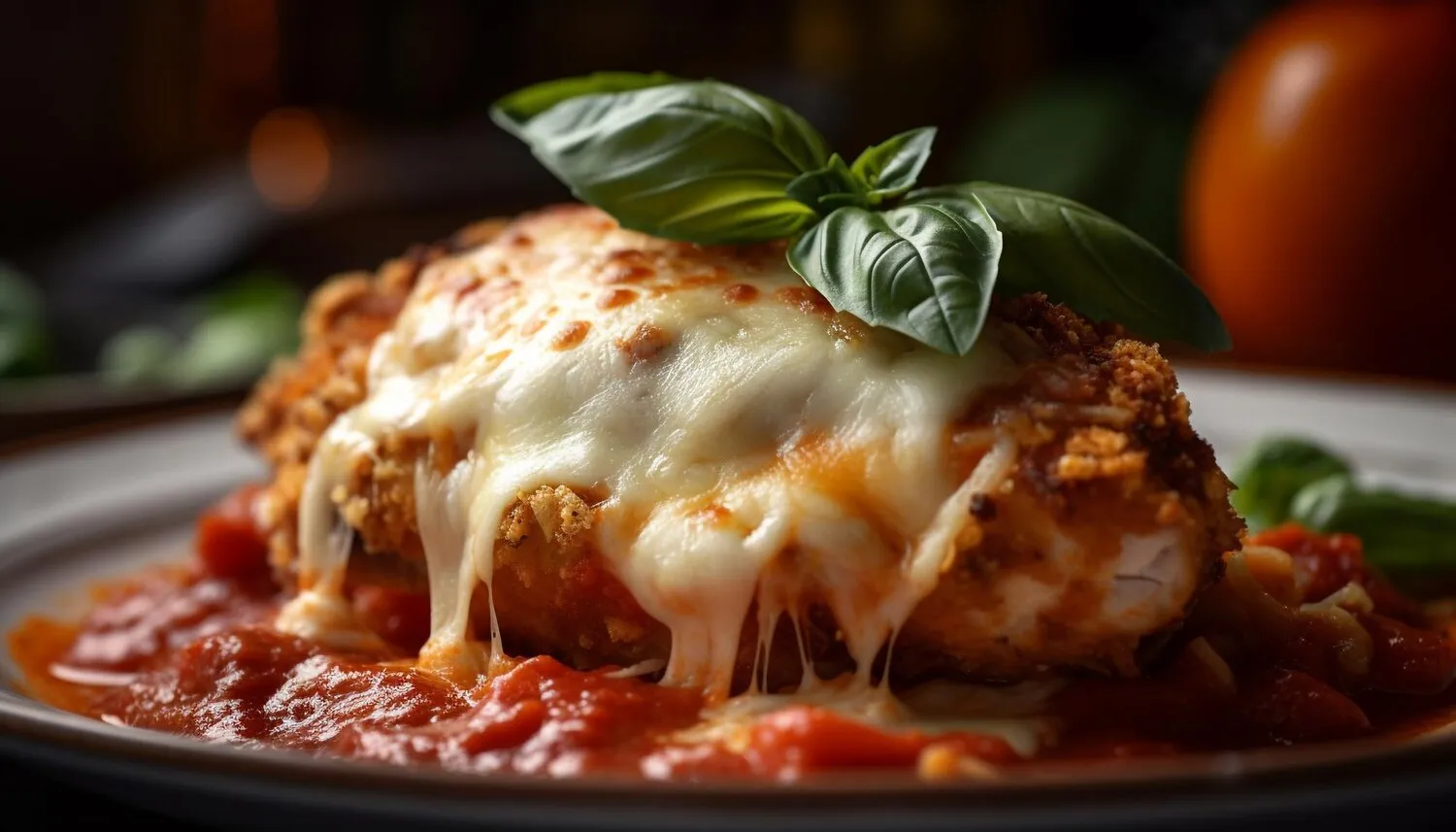
Parmegiana
Breaded beef or chicken fillet, topped with tomato sauce and melted mozzarella cheese, often served with rice and fries.
Nutrition Facts
* The % Daily Value (DV) tells you how much a nutrient in a serving of food contributes to a daily diet. 2,000 calories a day is used for general nutrition advice.
The exact origin of Parmigiana is debated, with both Southern Italian regions like Campania, Sicily, and Parma claiming its invention. Some trace its roots back to similar dishes using eggplant, like the Sicilian 'Parmigiana di Melanzane.' The dish likely evolved with the introduction of tomatoes from the Americas and the availability of mozzarella.
Parmegiana is a comforting and popular dish, often associated with family meals and casual dining. It represents Italian culinary tradition and the resourcefulness of using simple, fresh ingredients.
Family Meal Staple
Parmigiana is frequently prepared for family dinners, embodying the Italian tradition of sharing food and enjoying each other's company.
Restaurant Favorite
The dish is a common offering in Italian restaurants worldwide, appreciated for its satisfying and familiar flavors.
Adaptability
While traditionally made with eggplant (Parmigiana di Melanzane) or meat, variations exist using other vegetables like zucchini, showcasing the dish's adaptability.
Parmegiana offers a delightful blend of savory, cheesy, and tangy flavors. The breaded meat provides a crispy texture and richness, balanced by the acidity of the tomato sauce and the creamy, melted mozzarella.
The dish combines the umami of cooked meat with the sharp, acidic notes of tomato sauce (typically containing garlic, oregano, and basil). Mozzarella adds a creamy, mild counterpoint. The breading contributes a crispy texture and additional flavor depth, often enhanced by herbs and spices.
Breading Technique
Ensure the meat is properly coated in breadcrumbs for a crispy texture. A three-step breading process (flour, egg, breadcrumbs) is recommended.
Tomato Sauce Quality
Use a high-quality tomato sauce, either homemade or a good-quality canned option. Simmering the sauce for a longer period enhances its flavor.
Mozzarella Choice
Fresh mozzarella is preferable for its creamy texture and flavor. However, low-moisture mozzarella can also be used for better melting.
Resting Time
Allow the Parmegiana to rest for a few minutes after baking to allow the cheese to set slightly and the flavors to meld.
Explore additional Brazilian comfort food dishes and restaurants
Explore Brazilian comfort foodDiscover top dining spots and culinary experiences in Rio Claro.
Explore Rio ClaroLearn more about the food culture, restaurant scene, and culinary heritage of Brazil.
Explore Brazil